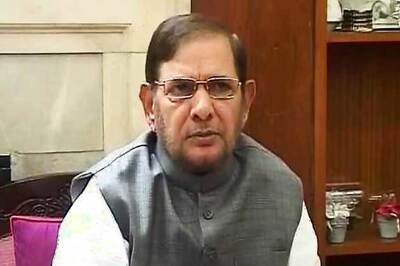
views
Kathmandu: Have you ever heard of Chomolungma or Sagarmatha? For the uninitiated, these are the Asian names of Mt Everest. An American photographer, mesmerised by the world's highest peak since his boyhood, is calling for it to jettison its popular name as it is a legacy of British colonisation.
Jeff Botz, whose photographic project ‘Portrait of Everest: An examination of appearance and identity’ has been on display in Kathmandu since last month, is trying to create awareness about the mountain's original identity and Britain's attempt to dominate "this small but significant piece of geography" for nearly 160 years.
After establishing its rule over India, the British East India Company began a survey of its territory in 1802, which became known as the Great Trigonometric Survey continuing for over six decades.
In 1856, an Indian overseer, Radhanath Sikdar, estimated that an obscure mountain, dismissively called Peak XV, was actually the highest peak in the world, surpassing Kanchenjunga, which was believed to be the highest mountain till then.
Nine years later, the new peak was officially named Mt Everest by Britain's Royal Geographical Society after Sir George Everest, former British surveyor-general of India.
"There was an objection by the Asiatic Society in Bengal which was ignored because of the more pressing problem of the Indian mutiny," says Botz.
The 62-year-old, who first came to Nepal in 1973 to glimpse the magic mountain, says it was known to Tibetans centuries before the British, and revered as Qomolangma, the ‘abode of the Mother Goddess’.
"The British scoffed at the Tibetan tradition and obscured the goddess of the mountain by covering her with the shroud of George Everest, changing the meaning and uses of the mountain," he says. "This isn't a simple act of identity theft; it's character assassination."
In Nepal, the mountain is called Sagarmatha. Botz says since neither Nepal nor Tibet was colonised by the British, they have no jurisdiction over Mt Everest, which lies on the border between the two.
"I have been able to find no legal basis or precedent for any one nation creating place names and applying them to locations within the borders of other sovereign nations," he says.
In 2008, after Nepal became a republic, Botz wrote to the first Maoist prime minister, Pushpa Kamal Dahal Prachanda, urging him to remove the name of Sir George Everest from the world's tallest mountain and assert Nepal's "sovereign right to control affairs within (its) borders" by renaming the peak Sagarmatha.
"Everest is not Everest, it is Sagarmatha, it is Qomolangma," he wrote.
"The mountain is more of an intellectual property... and intellectual properties have great value to the person or organization that claims and controls them... Your name is your brand. Name recognition will benefit all Nepali exports, goodwill, tourism, and financial wellbeing. There is nothing Nepal could do to promote its name more effectively than to assert its right to rename this mountain as Sagarmatha."
While there has been no response from the government of Nepal, the Everest community also remains unperturbed.
American mountaineer Pete Athans, called ‘Mr. Everest’ for climbing the 8,848-metre peak seven times, says the colonisation perspective and sensitivity might have been more trenchant 100 years ago but not now.
"These days, no one considers Britain much of an occupier or coloniser and Nepal was actually never consummated as a colony," Athans told IANS.
"Sagarmatha is a nice Nepali name but many people don't recognize it. Qomolangma is a Chinese transliteration of Chomolungma. I think western Tibetans may not appreciate using their occupiers' verbiage."
Athans, now engaged in rescuing ancient artefacts found in the mountain caves of northern Nepal and preserving them, feels not too many people object to Everest, especially since Sir George was respectful of the local names and their pre-dating his work.
"I think you can use them all, at the risk of confusing your readers," he adds.
Lady June Hillary, wife of Sir Edmund Hillary who assumed the reins of the Himalayan Trust founded by the first Everest conqueror to help the Sherpas of Nepal after Hillary's death, echoes Athans tacitly.
"In our house, Everest was called all three names," she says. "So it was not an issue."




















Comments
0 comment